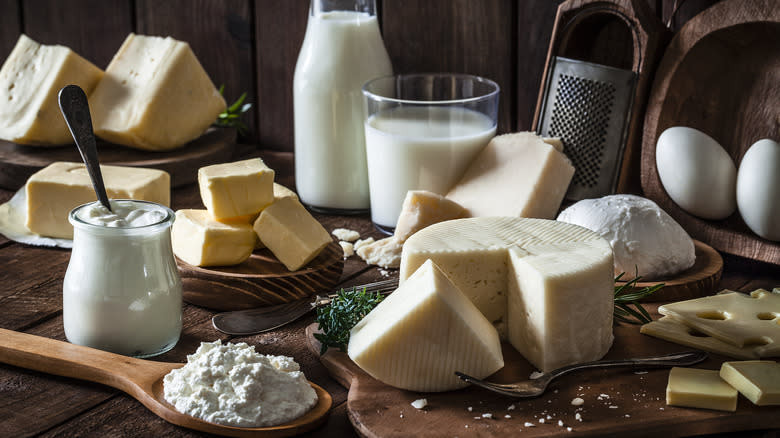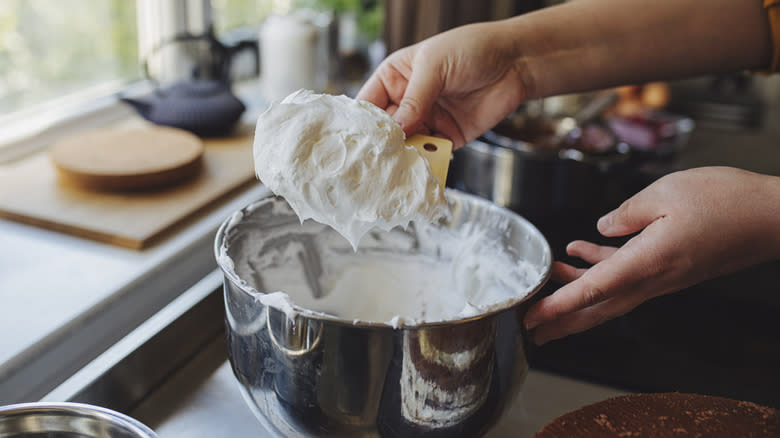The Subtle Differences Between Cream And Buttermilk

While heavy cream and buttermilk have quite a few similarities, they also have a number of important differences to consider. Understanding these differences is key to using each ingredient correctly, whether you're whipping up some baked goods, preparing a creamy sauce, or making your own ice cream. First up is heavy cream, which consists of the fat that accumulates on top of milk. In addition to being included in lots of baking recipes, heavy cream is also ideal when you need to thicken something like soup or sauce.
Conversely, buttermilk is created by adding a certain kind of bacteria, i.e., lactic acid, to ordinary milk. Lactic acid serves as a fermenting agent, which creates a somewhat tangy flavor profile. However, buttermilk isn't usually reserved for drinking like regular milk is. Instead, it can be incorporated into recipes that call for baking soda to help with leavening. Due to these differences, you can't necessarily use one dairy product in place of the other. Of course, how each product is prepared is just one of many distinctions to consider.
Read more: 8 Baking Sheet Mistakes You Want To Avoid
Which Dairy Product Contains More Nutrients?

When it comes to nutritional values, buttermilk offers lots of nutrients when included in recipes. This fermented dairy product contains a substantial serving of calcium, making up 22% of a person's daily recommended value. Other nutrients include protein, vitamin B12, and riboflavin. As for fat content, buttermilk contains just 3 grams, which sets it apart from the much higher fat content found in heavy cream.
Keep in mind that heavy cream contains a substantial amount of fat, with a whopping 43 grams. While it also contains protein, it offers significantly less than buttermilk at just 3 grams. Heavy cream does offer 55% of the daily recommended value of vitamin A, which benefits eye health as well as boosting immune function. Other nutrients found in heavy cream include vitamins D and E, along with calcium, albeit in relatively small amounts. These figures show that buttermilk has the edge over heavy cream in terms of nutrients, but both dairy products can last quite a long time when stored properly in your kitchen.
Does Heavy Cream Last Longer Than Buttermilk?

Both heavy cream and buttermilk have lots of culinary uses, so they're great items to keep on hand in your kitchen. Accordingly, you should be aware of each dairy product's shelf life to ensure optimal taste, as well as food safety. Surprisingly, heavy cream can last as long as one month provided that it's refrigerated correctly, meaning that it's kept in consistently cold temperatures. If you notice that a container of heavy cream is giving off a sour smell, or that it appears lumpy, it's likely spoiled and should be discarded to avoid a possible bout with foodborne illness.
As for buttermilk, it has a shelf life of approximately two weeks when stored in the refrigerator. You can also freeze buttermilk without experiencing an adverse effect on the taste or texture, which isn't always the case with dairy products. When frozen, buttermilk can remain safe for consumption for up to three months. Now that you better understand the differences between cream and buttermilk, you can use these ingredients with confidence when cooking or baking.
Read the original article on Daily Meal.


